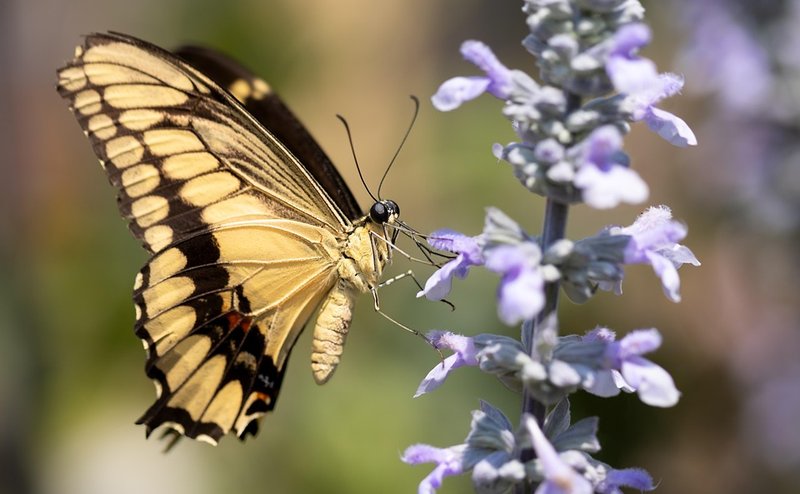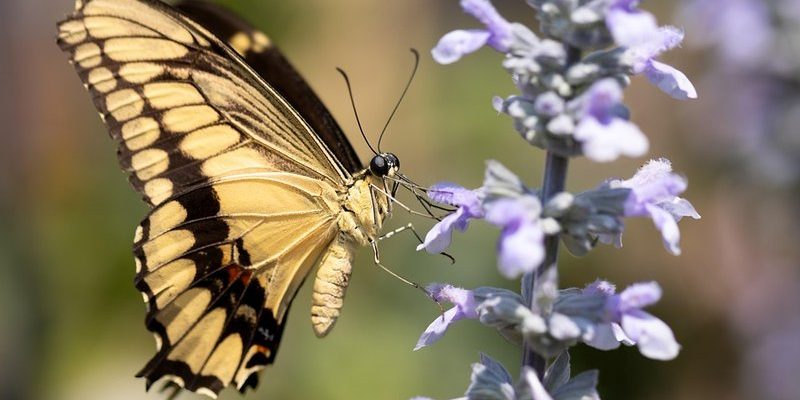
You might be wondering why we should care about these butterflies. Just like a key can unlock a door, swallowtail butterflies help unlock the mysteries of our environment. By understanding their roles, we can appreciate the intricate web of life that supports us all. So, grab your favorite drink, and let’s explore how swallowtail butterflies contribute to the health of our ecosystems.
What Are Swallowtail Butterflies?
Swallowtail butterflies belong to the family Papilionidae, and they’re named “swallowtail” because of the distinctive tail-like extensions on their hindwings. With over 500 species around the globe, these butterflies come in various shapes and colors. Some of the most common types include the Eastern Tiger Swallowtail, the Black Swallowtail, and the Anise Swallowtail.
Let’s break it down a bit. Swallowtail butterflies are often large and colorful, which makes them easy to spot wandering through gardens or parks. Their wings can display bold contrasts of yellow, blue, and black, providing them with a unique elegance. But these butterflies aren’t just pretty; they undergo a fascinating transformation during their life cycle, starting as eggs, then becoming caterpillars, pupae, and finally, butterflies.
This cycle is important because it shows how these creatures adapt and thrive in different environments. For instance, the caterpillars often feed on specific host plants, forming a connection between them and the local flora. If we lose these butterflies, we risk disrupting this delicate balance.
Pollination: A Key Role
One of the primary roles that swallowtail butterflies play in ecosystems is pollination. You may have heard of bees and birds as pollinators, but butterflies are equally significant. While sipping nectar from flowers, they transfer pollen from one bloom to another. This process is crucial for plant reproduction.
Think about it: without pollinators, many plants wouldn’t be able to produce seeds and fruits. This loss would have a cascading effect on animals and humans who depend on those plants for food. Swallowtail butterflies contribute to the pollination of many crops, including fruits like oranges, apples, and cherries. When you bite into a juicy fruit, you’re not just enjoying the sweet taste; you’re also enjoying the hard work of these butterflies.
Additionally, promoting the presence of swallowtail butterflies can lead to healthier plant communities. When they pollinate, all sorts of other species can thrive, creating a dynamic ecosystem full of life.
Food Web Dynamics
Swallowtail butterflies are also integral to the food web. They serve as food for various predators, including birds, spiders, and mammals. This adds to the biodiversity in an ecosystem. Just as every player on a sports team has a role, swallowtail butterflies play a key part in the larger picture of life.
By being prey, these butterflies support the survival of many animals. For instance, a songbird might rely on swallowtail butterflies as a food source during the summer months. If swallowtail populations decrease, it could lead to a ripple effect, impacting the survival of these birds and, ultimately, other wildlife.
Interestingly, the life cycle of swallowtail butterflies allows them some defense mechanisms, such as mimicry and toxic compounds in their caterpillars. This helps them survive longer and maintain their populations, which is critical for the stability of ecosystems.
Habitat Support
Swallowtail butterflies thrive in various habitats, including forests, meadows, and gardens. These diverse living spaces are crucial because they provide the necessary resources for their survival. The presence of swallowtails often indicates a healthy ecosystem with a good variety of plants and animals.
Moreover, their larvae (caterpillars) can help manage plant populations. Some species are picky eaters, which means they tend to feed on specific plants. This selection helps prevent any one plant from overtaking the landscape, allowing multiple species to flourish. It’s like having a gardener in nature, ensuring a variety of plants can coexist.
Preserving the habitats where swallowtail butterflies live is vital. Creating butterfly gardens with native plants can help these butterflies thrive, ensuring they continue to play their important roles in our ecosystems.
Indicators of Environmental Health
Swallowtail butterflies can act as indicators of environmental health. If their populations are thriving, it suggests that the surrounding environment is healthy and well-balanced. Conversely, if numbers decline, it could signal issues such as habitat loss, pollution, or climate change.
For instance, if you notice fewer swallowtail butterflies in your area, it might be time to look for signs of environmental distress. Perhaps the flowers they depend on are disappearing, or there’s increased pesticide use. Monitoring butterfly populations can provide insights that help us understand the overall health of our ecosystems.
Conservation efforts often include monitoring these butterflies. Researchers use their populations to gauge changes in habitats and make informed decisions on conservation strategies. By taking care of swallowtail butterflies, we’re not just safeguarding one species; we’re helping to protect a whole ecosystem.
How You Can Help Swallowtail Butterflies
You might be asking yourself how you can make a difference. Well, here are some simple steps you can take to help support swallowtail butterflies in your area:
- Plant Native Flowers: Include plants that attract swallowtails, like milkweed and dill, in your garden.
- Avoid Pesticides: Reducing or eliminating pesticide use can create a safer environment for butterflies and other pollinators.
- Create Habitats: Leave some areas in your yard a bit wild to provide natural habitats for these butterflies.
- Participate in Citizen Science: Join local efforts to monitor and report butterfly populations. This helps researchers understand trends.
Even small actions can lead to significant changes in supporting swallowtail butterflies and the ecosystems they inhabit. Each step counts!
The Future of Swallowtail Butterflies and Ecosystems
As we consider the role of swallowtail butterflies, it’s clear they are not just beautiful creatures fluttering through our gardens. They are crucial players in our ecosystems, supporting pollination, serving as food for other animals, and helping maintain balanced habitats. Protecting and understanding these butterflies can lead to healthier environments for all of us.
In the face of environmental challenges like climate change and habitat destruction, we must advocate for the conservation of swallowtail butterflies. By preserving their habitats and supporting their populations, we can help ensure that future generations will enjoy their beauty while benefiting from their roles in nature.
So next time you spot a swallowtail butterfly, take a moment to appreciate not just its beauty but the important role it plays in our world. Together, we can nurture these remarkable insects and the ecosystems they enrich. After all, the health of our environment depends on every single one of us.

